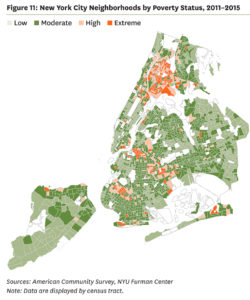Carla Hernandez
Prof Krystyna
English 110
12/6/19
Working Thesis:
Although the large majority of street homeless New Yorkers are people living with mental illness or other severe health problems. Homelessness have a higher rate of serious mental illness and addiction Disorder. Homeless can contribute to mental illness when these symptoms become so severe that the person cannot function.
I will be mapping about homelessness epidemic in the Bronx, Manhattan and Queens. Also Their effect in our community and what our community should do to help them stop being in the street and get so addicted to drugs.
The effect of homelessness on society can be quite costly, not only in terms of tax dollars spent but on the strain it puts on social agencies, Individual and families. Homeless people spend more time in jail or prison than other population. On the other side part of it has a result of violating laws that specifically target homeless people. Homeless has an effect on both the individual and society. Society has to pick up the cost for homeless individual to get very basic service such as treatment for illness, places to sleep in and food to eat. Furthermore The effects on homelessness are huge on their physical and emotional health. Homelessness men and women don’t have the money get the medical care they need so they suffer from colds. Homeless people are more likely to get into drugs and alcohol and getting HIV. Also they don’t get enough vitamins to be healthy or sleep. Another thing is that homeless people are more likely to get raped and get into a physical violence because they don’t have houses to protect them. I would like to learn more about homelessness effect
The coalition for the Homeless provides up to date information on New York City’s homelessness population. In recent years. Homelessness in New York City has reached the highest levels since the great depression of the 1930s. Furthermore compared to homelessness families, homeless single adults have much higher rates of serious mental illness, addiction disorders and other several health problems. Each night thousands of unsheltered homeless people sleep on New York city street, in the subway system, and in other public spaces. There is no accurate measurement of New York City’s unsheltered homeless population. This year’s count was conducted in 24 hospital emergency rooms and waiting areas in the Bronx, Queens and Manhattan.
When we think about what causes homelessness, we often think about addiction, mental illness, domestic violence, Job loss, and disabilities. Those are all accurate demographic characteristics of the homeless population. While some people work through day labor companies or have service industry jobs, unemployment is more common. And an estimated Forty percent of the homeless population is disabled. Also homeless people are more likely to be victims of violent crimes than to commit those crimes themselves. People without housing are vulnerable and lack the safety that a home provides while it is true that homeless people often have lengthy arrest records, they’re most often arrested for non- violent crimes associated with not having a home, like public urination, or trespassing charges for camping on someone else’s land.
Conflict over the use of public and community spaces increases when there are large numbers of people without access to their own private space. These conflict can bring to the surface deeply rooted issues linked to negative perceptions about members of society who are poor, vulnerable or marginalized. The Bronx contains five of the ten communities citywide that experience the highest incidences of family homelessness. These communities are university heights, south Bronx, and Tremont. Homelessness is a growing problem that negatively impact the nation’s economic competitiveness. According to the U.S department of housing homelessness in the United States increased for the first time in seven years, and increases in the numbers of unsheltered individuals in the Fifty largest cities.
In conclusion
Studies show that the largest majority of street homeless New Yorkers are people living with mental illness or other Severed health problems. The mental health of homeless population is significantly worse than the general population, with the prevalence of mental disorders up to four times higher in the former. In my Opinion homelessness need to stop, we need to help those people by letting know their right here in the United States, They are not alone but sometimes what happens in situations like this is that those people prefer to be in the street than in a shelter because they know that in the street they have more possibility of getting money for their drugs and don’t work but in a shelter they will get help to stop dealing drugs and they also get the opportunity to be in a program for work.

WORKSITED
- Loren cassady, the effect of homelessness,june26,2018
- stephanie Watson,how homeless work, april28,16
- Kristin harris, the cause and effect of homeless,march 1, 2017



